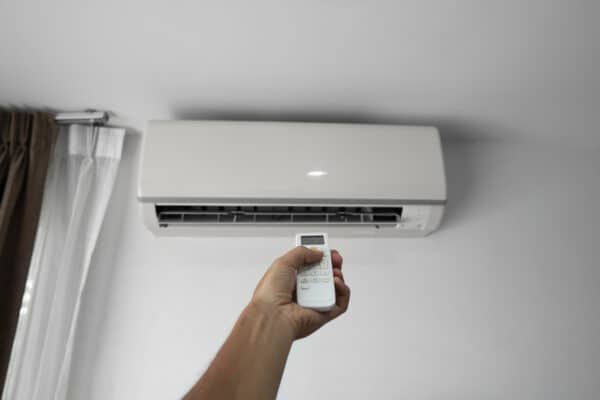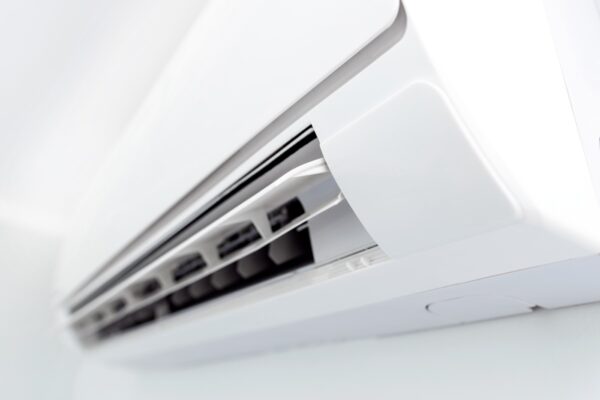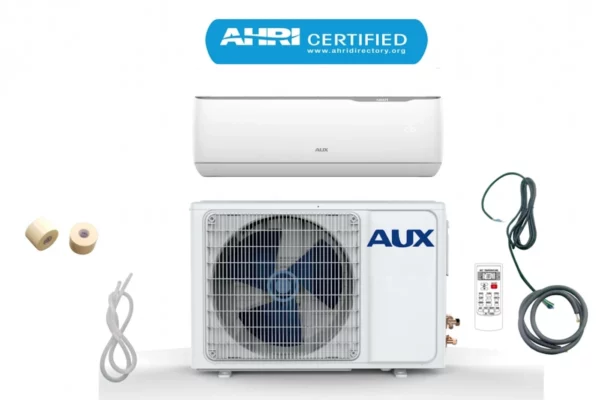What is ACMV? (ACMV Stands For) | ACMV vs HVAC
Certain regions in the world refer to air conditioning as ACMV while other regions refer to it as HVAC. Many people are wondering if both ACMV and HVAC are the same thing. So, I did some research.
ACMV stands for air conditioning and mechanical ventilation. The acronym ACMV is mostly used by people living in Southeast Asia. In countries like Singapore and Malaysia, heating is often not required and hence, people rarely use the term HVAC.
HVAC without heating basically equals ACMV. People who are using the term ACMV may not know some of the things involved in HVAC and vice versa. So, let’s discuss more on ACMV and compare it to HVAC.
What is ACMV?
ACMV or air conditioning and mechanical ventilation is the acronym or term used in the building construction industry of many countries in Southeast Asia. Here, we don’t need heating but air conditioning or cooling.
In Malaysia, we refer to HVAC contractors as ACMV contractors. ACMV contractors are the contractors who supply and install air conditioning and mechanical ventilation equipment for buildings under the ACMV project package.
When referring to ACMV, air conditioners do not possess the ability to provide heating. Hence, we called them air conditioners but not heat pumps. Conversely, in countries like the United States, split air conditioners are mostly heat pumps that have a heating function.
However, the term heat pump is also trending in Southeast Asia, primarily used for the hot water system. Precisely, it is known as the hot water heat pump. Otherwise, people called it the air source heat pump or water source heat pump.
In the meantime, I would like to inform you that you can learn quicker by getting my HVAC Begin (eBook) if you’re a beginner. But, if you have a year or two of experience, then I would suggest you consider my HVAC Basics (eBook). Nonetheless, I encourage you enroll in my HVAC Beginner Course: 10 Days to Become Competent in HVAC if you want to equipped yourself with a complete set of basic HVAC skills.
HVAC Beginner Course
Learn the most basics and foundational HVAC skills including cooling capacity calculation, equipment selection, duct sizing, pipe sizing, exhaust fan sizing, controls, electrical and more.
ACMV System Components
Since ACMV is about air conditioning and mechanical ventilation only, the system does not include components for heating in general. Below are the 5 major components of the ACMV system:
1. Air Conditioners
Air conditioners in the ACMV system only have a cooling mode. They don’t have a heating mode like most air conditioners in countries like the United States and Australia do.
The most common type of air conditioner in the ACMV system is the wall-mounted split air conditioner followed by the ceiling cassette split air conditioner. The ceiling ducted split air conditioner came in third as the ceiling exposed split air conditioner came in last.
System-wise, the split system is the most popular one followed by the multi-split system and then, the VRV or VRF system when comparing residential air conditioners.
In commercial applications, centrifugal and screw chillers are common while geothermal chillers are rare. In some cold places, air handling units may be fitted with hot water to provide precise temperature control.
2. Smoke Spill Fans
Under the ACMV system, the smoke spill system is one of the major components. The smoke spill system is also known as the smoke extraction system by people living in the Europe and Americas.
Smoke spill fans are used to extract smoke in the basement of a building in case of a fire. They are fire-rated up to 2 hours most of the time. Usually, they are associated with several fire-rated fresh air fans.
3. Pressurization Fans
The pressurization system is very common for people who are using the term ACMV as well as people who are using the term HVAC. Usually, the pressurization system is separated into the staircase, lift lobby and corridor pressurization system.
Pressurization fans are used to pressurize the staircase, lift lobby or corridor of a building in case of a fire. They are fire-rated up to 2 hours most of the time. They are often called fresh air fans since they pressurize using fresh air or outdoor air.
4. Toilet Exhaust Fans
In an ACMV construction project, toilet exhaust fans are inevitable. Most toilets in high-rise buildings don’t have a window and thus, a toilet exhaust fan is needed. The fan is usually connected to the light switch.
5. Kitchen Exhaust Fans
For the ACMV system of the construction project for a hotel, kitchen exhaust fans are common. They are needed to extract kitchen smoke out of the large commercial kitchen used by the hotel. Smoke hogs which are sort of like oil filters are often associated with the kitchen exhaust system.
ACMV vs HVAC
Many people are curious to know what is the difference between ACMV and HVAC. So, below is some of the differences that I’m aware of:
| ACMV | HVAC | |
|---|---|---|
| Full-Form | Air Conditioning and Mechanical Ventilation | Heating, Ventilation and Air Conditioning |
| Air Conditioner | Air Conditioner (Cooling Only) | Heat Pump (Heating & Cooling) |
| Smoke Exhaust System | Smoke Spill | Smoke Extraction |
| Pressurization System | Staircase Pressurization | Stairwell Pressurization |
| Heating Method | N/A | Space Heater, Gas Furnace |
Furthermore, I found countries that use the term ACMV versus countries that use the term HVAC on Google Trend as below:


It seems like most people use the term HVAC more than the term ACMV. After all, many places in the world still require heating. So, if you are an engineer or a student, using the term HVAC on Google Search may give you a wide variety of results. However, if you want precise answers, sticking to the term ACMV is fine.
Lastly, consider my HVAC Begin (eBook) if you’re a beginner and you want to have a foundational knowledge in HVAC. But, if you have a year or two of experience, then I would suggest you consider my HVAC Basics (eBook). Nonetheless, I encourage you enroll in my HVAC Beginner Course: 10 Days to Become Competent in HVAC if you want to equipped yourself with a complete set of basic HVAC skills.
HVAC Beginner Course
Learn the most basics and foundational HVAC skills including cooling capacity calculation, equipment selection, duct sizing, pipe sizing, exhaust fan sizing, controls, electrical and more.
If you have anything to add (or ask) about this topic, leave a comment down below!









